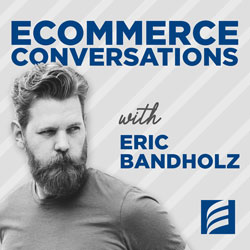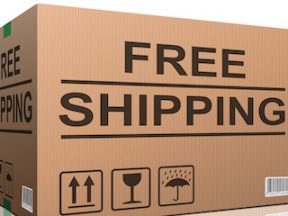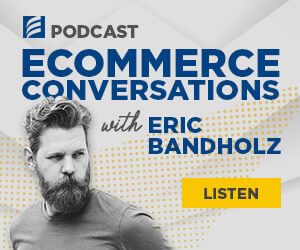Talk about your needle in a haystack.
When you ship one package through the FedEx system, it becomes one of more than 6 million, and the company, formerly Federal Express, moves around the globe daily. If you shipped it on UPS, it would be one of 14 million handled by the company now known mostly as “Brown.” Over at the U.S. Post Office, now marketed as USPS, it would be one of about 6.5 million priority and parcel post packages handled daily.
Of course, other shippers handle smaller numbers, like the newly aggressive DHL, which recently acquired Airborne Express, as well as Purolator and BAX.
All of these shippers are doing quite well, thank you, due in part to the $170-plus billion Internet ecommerce industry that has emerged like a Phoenix from the ashes of the Dot-Com crash in the late 1990s. And while your single package may be the proverbial needle in a haystack, it is nonetheless quite findable.
A fact of daily life for these shippers is that they are all competing for your business, and that competition is a good thing when you pick and use a shipping option for your ecommerce business.
Your shipping options include picking a carrier or carriers to haul the stuff away, having a wholesaler or manufacturer drop-ship for you, or having a fulfillment house warehouse ship your products.

Carriers worldwide now compete for ecommerce deliveries.
The Carriers
On the surface, all of the major carriers seem to be the same thing, but on closer examination, they each have areas in which they excel and may be more cost-effective or offer higher customer service. For many small ecommerce shippers, the biggest factor in choosing a carrier is typically price. Here, each shipper seems to have a niche into which they fit.
For example, shipping a one-pound parcel from Los Angeles to St. Louis, you can’t beat USPS for low-cost shipping. Its 1-3 day (three days to the most distant zone from the shipping point) rate (in your packaging or theirs) is $3.85 for one pound to any zone. This is a Priority Mail shipment, a brand and classification that has gained popularity over the past four years. The same guaranteed 3-day shipment on UPS would cost $11.25. On FedEx the one-pound package on its 3-day Express Saver would run $9.25. DHL would cost you $13.48 for two-day delivery.
But let’s look at the rate for a 15-pound package (in your packaging) going the same distance in three days. FedEx will charge $32.50 for a weekday delivery. USPS will charge $22.50, and UPS will get $36.98 for second day (end of day). DHL only has second day at $47.81.
Sending the same 15-pound package on slower ground service saves money but points out other carrier differences. Here FedEx gets $10.03, DHL costs $10.37, UPS is $15.74, and the Post Office comes in last at $17.49 and may take up to six days.
However, the Post Office has added a Priority Flat Rate Box service, in which you can ship up to 70 pounds anywhere in the U.S. for $7.70. There is a catch — the contents must fit into one of two USPS Priority Flat Rate Boxes. The inside dimensions for the two boxes available are 11″ x 8.5″ x 5.5″ and 13.625″ x 11.875″ x 3.375″. As a side note, it is hard to imagine something about the size of a large shoebox ever weighing 70 pounds. But if you’re shipping lead or rocks, you get a deal.
When it comes to guaranteed overnight shipping, FedEx and UPS still reign. DHL has made serious gains but still lacks the pick-up and delivery map of the two bigger carriers. The USPS says it will ship one pound overnight for $13.75, but it’s not guaranteed until sometime between 12:00 and 3:00 p.m. FedEx offers “first overnight” (by 8 a.m. in any time zone) and their old standby “by 10:30,” as do UPS and DHL.
You can easily calculate the rates for any shipment by going to each carrier’s website. Even though the USPS invented the ZIP code, they all rely on it for rate calculation and routing.
Saturday Blues
One of the major differences between shippers is the way they count workdays. USPS works on a six-day week, while DHL, UPS, and FedEx go on a five-day week and charge for Saturday delivery and pickup. If you have items such as perishables that must be delivered in two days, you must be very careful. The basic rules are:
- Avoid Saturday deliveries.
- Never ship a two-day item any later than Thursday (ship Wednesday to avoid Saturday problems).
If, for example, you shipped a cheesecake from Los Angeles to St. Louis on Thursday, you could not use USPS Priority because its guarantee is 1-3 days. That means your cake will likely not arrive in St. Louis before Monday. UPS two-day and FedEx three-day wouldn’t make it until Monday either.
The only options are overnight or two-day with Saturday delivery. The guaranteed two-day delivery plus the Saturday surcharge will double your shipping cost. FedEx and UPS both charge $12.50 extra for Saturday delivery.
You have more leeway for non-perishable items where the customer is willing to wait to save money. Here, the choice is often one of convenience and personal preference. I spoke with one ecommerce owner in Florida who uses only USPS and charges all customers a flat shipping rate. She has a few items that cost her a little more to ship, but the light bookkeeping and predictable shipping costs work for her.
Shipping Options
If you send less than a few dozen items a week, your shipping costs and options are less flexible than those of someone with a high volume. Also, your origin — the point from which you ship — may impact your costs and access to certain services.
Online retailing has been a boon to people in rural areas. There are plenty of small ecommerce businesses in small towns and villages. While the service level from companies like FedEx and UPS has tended to follow the overall trend, it can be a tricky business to expedite rapid fulfillment from a rural location. Ecommerce entrepreneurs in rural areas should test some options. USPS is often the best bet, but may not meet your timeframes.
Drop-Ship Method
One strategy is having the product’s manufacturer or wholesaler drop-ship for you. You pass the order to the drop-shipper, which saves the expense of having the inventory shipped to you and having to warehouse it.
Brad Beiermann, president of Heinote, a drop-shipping consulting firm in Illinois, has compiled a lengthy directory (updated each year) of drop-shipping companies. The book is available from his website.
Backfilling
Another strategy for rural shippers is to find out if carriers serving the region send empty trucks back to the dock after dropping parcels there. If so, they may be more competitive with their shipping rates if they can haul something back.
The strategy, called backfill, worked well for a rural shipper in the northwest U.S. Using backfill, The Fruit Company has beat competitors on shipping costs while adding value to their product. The best way to find out about the backfill opportunities is to talk to the driver who comes to your business.
Shipping Software and Services
Shipping software can help businesses expedite product movement. There are several off-the-shelf options. The software can automatically determine the best and most cost-effective way to ship a particular parcel. The system can integrate with barcode scanners, printers, various shippers, and a scale system.
Harvey Software Inc. has something called the Computerized Parcel System (CPS), which runs on Windows. The basic CPS Platinum System sells for about $1,900 and is a standalone application that can be installed and configured by the end user. According to Steve Stevenson in the sales division at Harvey, the program has proven cost-effective for shippers moving as few as 10 packages per day. The user may use multiple shippers. The system does charge to rate shop for you and even computes the fuel surcharges, which everyone except USPS assesses. There is talk, however, that even USPS will start soon.
Other software providers include CMS Consultants, Pfastship, Varsity Supply Change Execution Suite, and SECAP Parcel Shipping Software.
The user inputs parameters such as destination, weight, dimensions, values, time requirements, and other items. The software shops the rates and routes and provides the best shipping method. Then it prints the shipping labels, handles the billing, and even syncs with an accounting program. The selling point is that while you can accomplish the same thing with each of the shipper’s websites, the time and accuracy factors shift in your favor when using the software.
Fulfillment Services
Ecommerce merchants have another option. They can arrange with a fulfillment house to handle their warehousing and shipping matters. Chances are a fulfillment provider will have created relationships with carriers, which will have generated lower rates. Even though you will pay the provider to expedite each shipment, you’ll likely save money on labor, preparation, and transportation in the long run.
That could free up time for one- or two-person shops to market and create more products. Such fulfillment services can be especially beneficial to rural shippers. Check your local Yellow Pages or do a Google search using the term “fulfillment services.”





